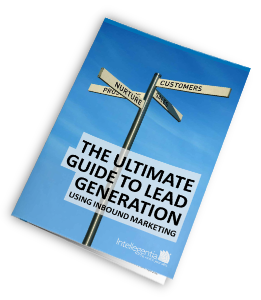 In their book ‘Inbound Marketing’, Brian Halligan and Dharmesh Shah co-founders of Hubspot, outline that marketers in mid-size and large companies spend 80 percent of their time worrying about conversion rates and 20 percent of their time getting more visitors to their website.
In their book ‘Inbound Marketing’, Brian Halligan and Dharmesh Shah co-founders of Hubspot, outline that marketers in mid-size and large companies spend 80 percent of their time worrying about conversion rates and 20 percent of their time getting more visitors to their website.
The emphasis on lead conversion vs website visitors varies from industry to industry. In the IT technology sector, particularly in the IT Channel, there is still a dependency on traditional outbound marketing, because quite simply that is the way most channel partners have grown in the past.
In addition, vendor marketing development funds to the channel are more easily secured by submitting plans for events, and telemarketing campaigns. So measurement is quite rightly based on conversion rates and sales.
However, with the downward trend in the quality and quantity of leads through traditional methods, a change of emphasis is needed, and the savvy IT channel partners are adapting to reflect the way IT buyers are choosing their suppliers. Buyers are looking to their peers, basing decisions on recommendations, and positive word of mouth, researching solutions and options before contacting vendors, and this research is being carried out online.
60% of the B2B buying process is completed before buyers make their first contact with vendors - Source: The Corporate Executive Board Survey
The internet has fundamentally changed the way people find, discover, share, buy and connect. So to pick up on Brian and Dhammesh’s point you need to attract your target buyers to your SEO optimised website in the first place, and then maximise the visitor conversion which could be download, subscribe, register, call, chat or buy call to action (CTA). Attract is the first stage of the inbound marketing methodology, and this is principally through blogging.
So how do you maximise conversion rates?
Some fundamentals first of all…terminology and what are you measuring?
I am going to use HubSpot terminology in this blog, which are as follows:-
Lead – A visitor to your website, that engaged with your company via an action – eBook download, contact us, subscription filling in their detail via a form.
MQL – marketing qualified lead – a lead that has been qualified by marketing through demographic information supplied and/or through behaviour on the website or landing pages, and passed onto sales for acceptance.
SQL – Sales Qualified Lead – an MQL accepted by sales and is being pursued as an opportunity.
Customer – we we all know what they are!
What should you be measuring?
- Visitor to lead conversion rate
- MQL to SQL conversion rate
- SQL to Customer rate
Most companies are pretty good at coming up with the SQL to customer rate, and most can have a reasonable shot at the leads generated through the website, although a large number struggle with the different sources that drove visitors to the site. The tricky bit is coming up with the conversion rates in the middle of the funnel? This is pretty fundamental as companies that have long and considered sales cycles need to nurture prospects for a period of time before they are ready to buy, and its important to know if leads are getting stuck in the middle of the funnel and what the conversion issues are.
The best way to maximise conversion rates using inbound marketing is to break the task up and tackle each stage using measurable goals, that way you will be more successful.
Attracting the right type of visitors to your website, starts with understanding who your buyers are, what are their pain points, what are those triggers that are going to galvanise them into action and finally what search terms will they be using to educate themselves to find a solution to their needs? This is a task we spend a lot of time on as part of Intellegentia’s 7 point inbound implementation methodology, its so important.
Getting this right, sets you up for creating the sales and marketing machine to drive better performance, and critically this is where sales and marketing need to get together and align themselves.
Creating relevant content in blogs, using keywords and search terms that are aligned to your buyers triggers and promoting it using social media and other channels is the website attraction process, maximising visitor to lead conversion stage is all about having relevant good quality content that will help educate buyers as they seek out solutions to their needs.
Creating a content roadmap for each buyer personas is another critical stage in Intellegentia’s inbound implementation methodology … this is not just for top of the funnel but all the way down.
So what visitor to lead conversion rates should you aim for? Typically 1-3%, although some HubSpot customers are realising 5%.
The next conversion to tackle is Leads to MQL. This should filter out the noise and make sure only companies that fit your profile are passed through to sales when appropriate. The first thing that needs to happen to maximise the conversion rate is to define what is an MQL, again this is where sales and marketing alignment is crucial, there should be agreement on the demographic and behavioural criteria so that smart forms and lists can be set up to profile leads, and conversion content can be written to engage leads with your brand, and drive them to the next stage.
Marketing automation using workflows is the key tool to maximise conversion.
This is where, the processes and content developed in the content roadmap will be translated into automated actions to keep the engagement process going and maintaining dialogue until leads are accepted by sales.
An important point to note at this stage is that its crucial for your database to updated and maintained as each contact moves between Lead – MQL – SQL – Customer (lifecycle stages) either automatically through workflows or manually. If this doesn’t happen
- you cannot measure conversion rates and
- you will have no idea of the pipeline velocity – what leads are being stuck or what leads are rapidly moving through your sales and marketing process.
As a guide, a lead to conversion rate of 10% is a reasonable goal to begin with.
The conversion between an MQL’s and SQL comes down to an organisations processes, for some extended lead nurturing is used until a MQL takes a definite action such as book a demo or schedule a consultation. For some organisations, an internal sales rep might kick off a call to qualify before acceptance as an SQL.
Whatever the process, sales rep’s need quality leads and the filters through the various stages of the funnel should be provide worthwhile opportunities, the intelligence gathered as part of the inbound process will give insight that should help maximise the conversion rate for closing the leads into customers.
The conversion rates between SQL and Customers, is dependent on the calibre of the sales teams and varies so much between industries.
If as part of your sales performance assessment you are not sure, then that is a major red flag, maybe some additional sales consulting expertise will be required.
A successfully implemented Inbound Strategy delivers quality leads to sales teams. Sales revenue is the only true measure, and within your business you will know what sales revenue you need to achieve your annual plan.

Coming back to Brian and Dhammesh’s point, in ‘Inbound Marketing’ they suggest flipping the effort, spending 80% of your time on getting visitors and 20% worrying about conversion. Successful implementation of systems like HubSpot means you can automate conversion processes at the top and middle of the funnel and measure the impact in real time. Allowing time to be spent attracting visitors.
For more information on how inbound marketing can generate high quality leads for your business, download out latest eBook: The Ultimate Guide to Lead Generation.
.png?width=250&height=76&name=Intellegentia%20Logo%20(MAIN).png)